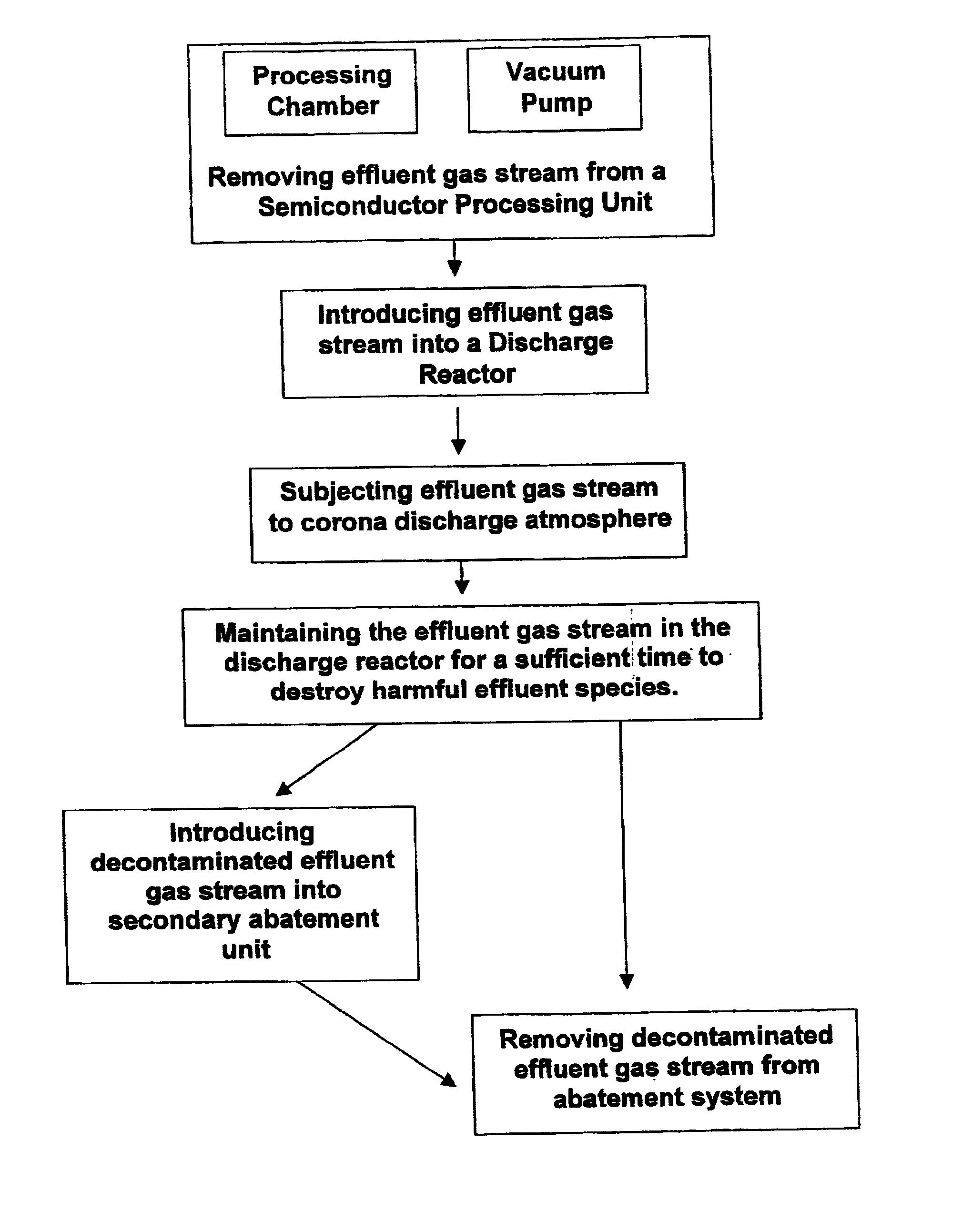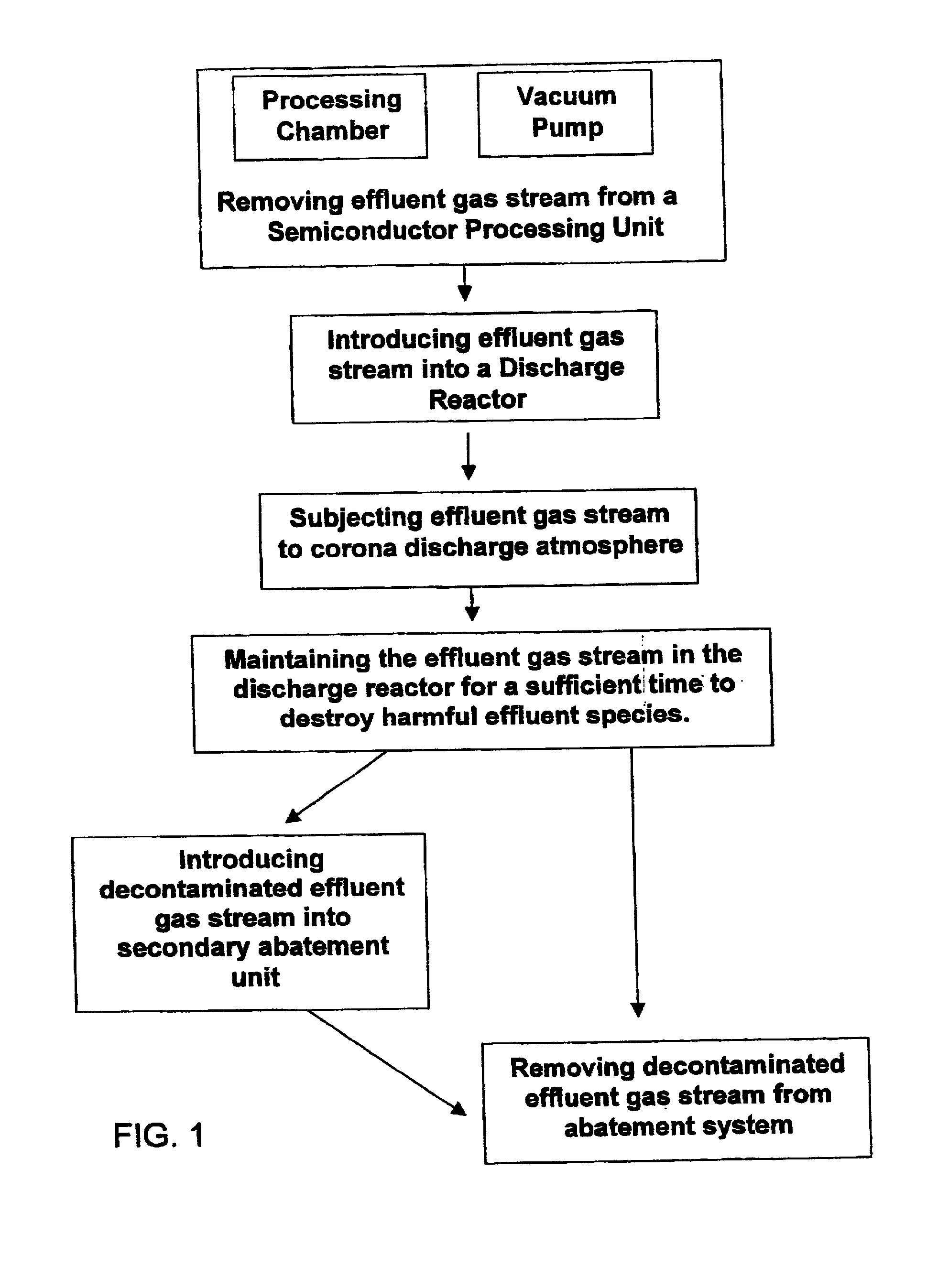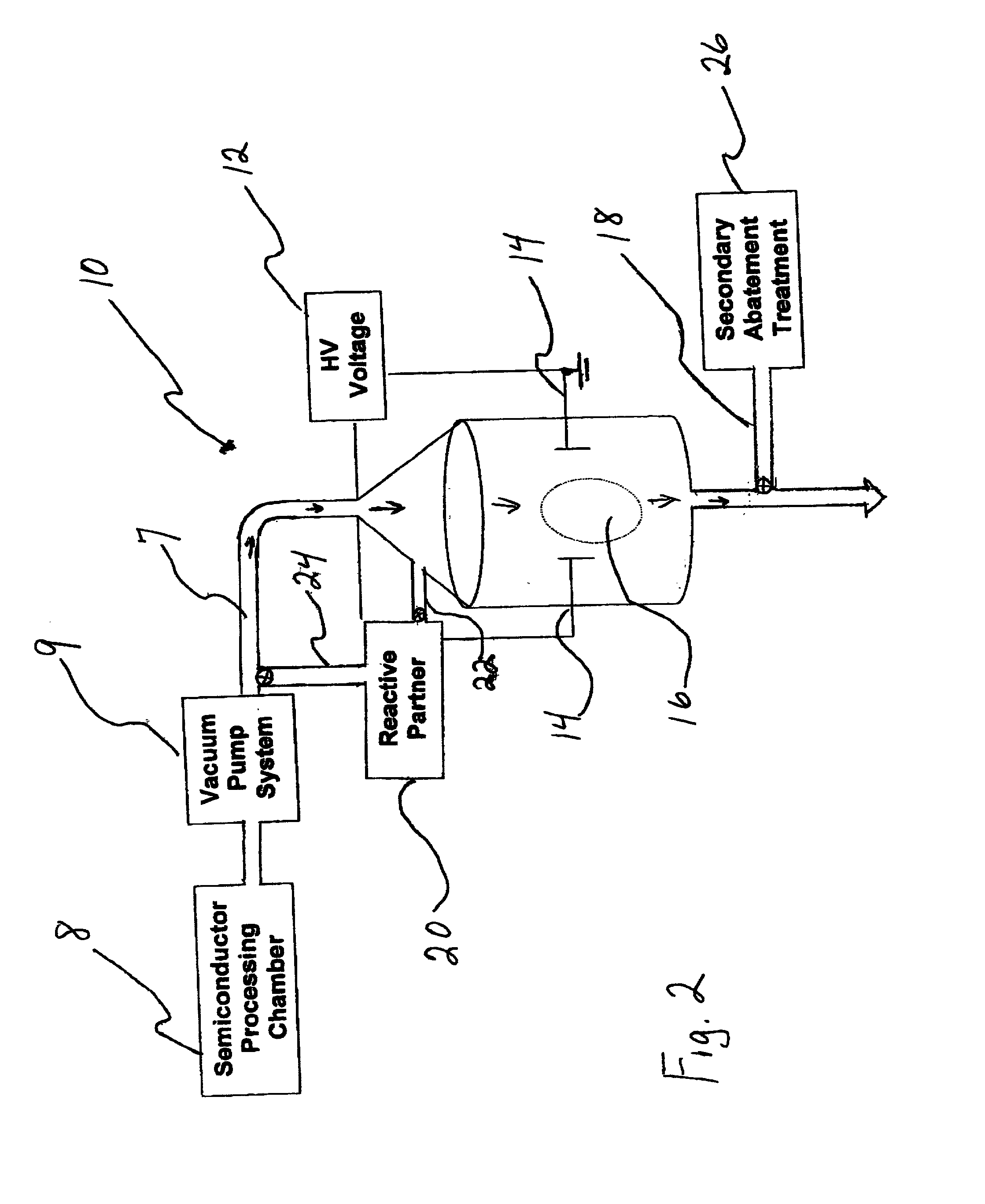Atmospheric pressure plasma enhanced abatement of semiconductor process effluent species
a technology of atmospheric pressure and plasma, applied in the field of plasma generation, can solve the problems of limited thermal destruction efficiency, high temperature required to decompose some materials, and the impact of the semiconductor industry
- Summary
- Abstract
- Description
- Claims
- Application Information
AI Technical Summary
Problems solved by technology
Method used
Image
Examples
Embodiment Construction
[0030] The present invention is based on the discovery that considerable benefit may be obtained by positioning a discharge reactor, maintained at approximately atmospheric pressure, after the processing chamber and vacuum pump system in the semiconductor processing unit. In particular it has been found that formation of unwanted precipitating deposits is greatly reduced thereby, essentially eliminating blockage formation in the vacuum pump and / or exhaust lines leaving the vacuum pump. Additionally, placement of the plasma abatement system after the vacuum system and away from the semiconductor processing chamber reduces interference with the processing tool.
[0031] The present invention provides for methods and systems for non-thermal plasma abatement of harmful unused semiconductor processing gases and reactive products formed in a semiconductor processing chamber. The plasma abatement involves using a plasma source to convert toxic or environmentally harmful emissions into harmles...
PUM
| Property | Measurement | Unit |
|---|---|---|
| voltage | aaaaa | aaaaa |
| voltages | aaaaa | aaaaa |
| voltages | aaaaa | aaaaa |
Abstract
Description
Claims
Application Information
 Login to View More
Login to View More - R&D
- Intellectual Property
- Life Sciences
- Materials
- Tech Scout
- Unparalleled Data Quality
- Higher Quality Content
- 60% Fewer Hallucinations
Browse by: Latest US Patents, China's latest patents, Technical Efficacy Thesaurus, Application Domain, Technology Topic, Popular Technical Reports.
© 2025 PatSnap. All rights reserved.Legal|Privacy policy|Modern Slavery Act Transparency Statement|Sitemap|About US| Contact US: help@patsnap.com



